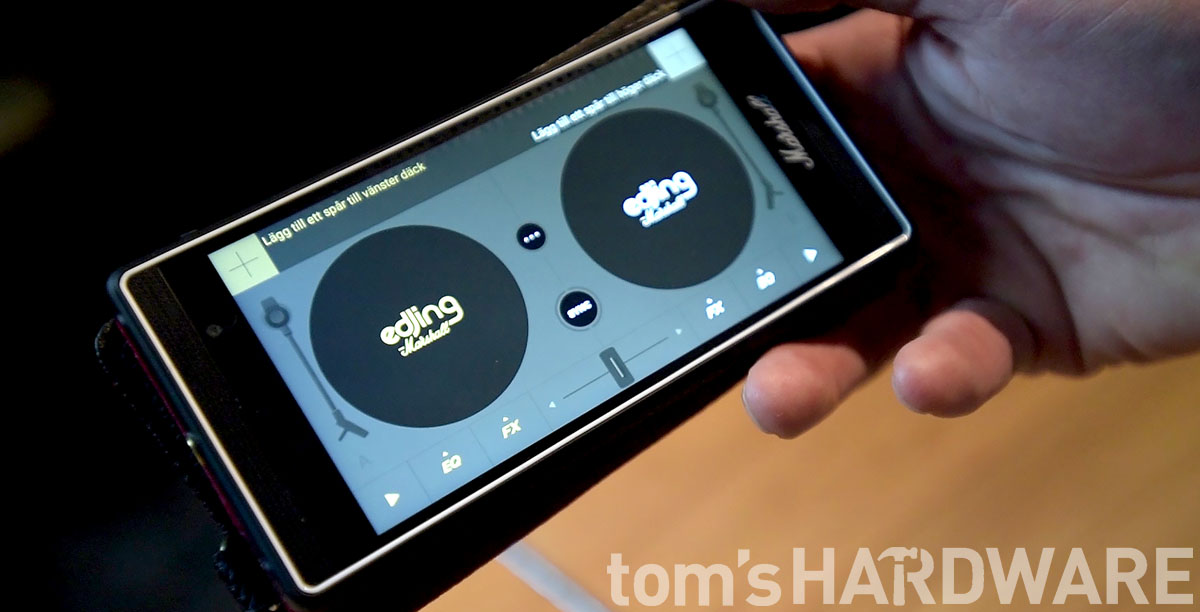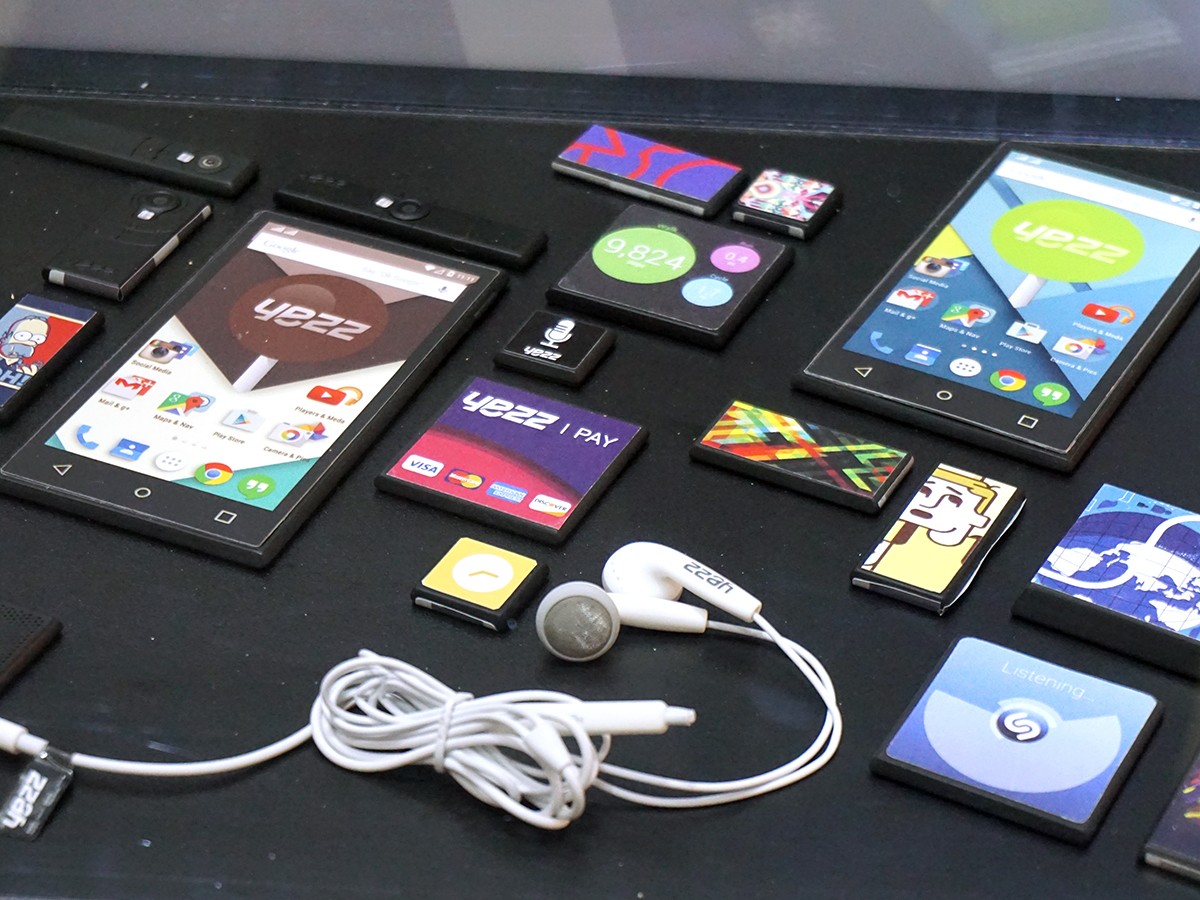How Can A Smartphone Stand Out In A Sea Of Sameness? Specialize
When we visited LG’s booth at CES, we saw a pair of nice-looking smartphones, the V7 and V10. They’re perfectly fine handsets with decent specs and a price to match, but there was also nothing much to set them apart from the throngs of other midrange smartphones on the market, either.
This is not to use LG as a punching bag. The company is no different from any other smartphone maker. It has premium offerings (such as its G-series, the latest generation of which is the LG G5) as well as a number of handsets to flesh out the mid- and low-range of the market. This is the current strategy of the larger handset makers -- even Apple.
This strategy has been effective to an extent. High-dollar buyers drop major cash on those incredible flagships, and the rest of us snap up what we can afford on down the line. The handset makers do their best to leverage their IP to add some value to the phones down their respective product stacks.
Smartphones Have Become Commoditized
But good golly, there are so many smartphones on the market that are just there, with really no purpose at all other than to add noise. At this point, given a new phone and a price tag between $300-$500, we could guess the specs with reasonable accuracy.
Plenty of other solidly-performing devices are populating the lower end of the market as well, around the $200 range.
If the vast majority of smartphones have become a commodity, how can a company make its handset stand out from the crowd? Why would anyone buy X over Y?
Smartphone buyers certainly divide themselves up according to platform to an extent, and once they’ve bought in, it’s easy to stay put. Once you get used to all of Google’s or Apple’s apps and services synced across your smartphone and PC, you’re probably more likely to stick with Android or iOS, respectively. (Microsoft is trying to foster the same integration and loyalty with Windows for Mobile.)
Get Tom's Hardware's best news and in-depth reviews, straight to your inbox.
That’s brand loyalty borne out of (slight) laziness, but it’s a form of brand loyalty nonetheless.
However, even just within the Android market, there are thousands of handsets to choose from. Microsoft is pushing hard worldwide on OEMs adopting its mobile OS in developing areas, and Apple--well, Apple will continue to do its “premium” thing.
Specialize, Even The Branding
In such a crowded environment, one way to stand out is by offering a specialized, or dedicated, smartphone aimed at a specific type of user.
For example, ahead of CES, Marshall--yes, the amplifier company, of Marshall stack fame--reached out to see if we were interested in seeing its branded smartphone. Frankly, I almost deleted the email outright. (We get hundreds, perhaps thousands of pitches leading up to CES, and most of them go straight to the Delete folder.) But then we thought, “Why not. Let’s see what they’ve got.” What they had was a smartphone that made sense.
Everyone who owns a Marshall product likely has a smartphone, and they may have some affinity towards the brand. They’re also more likely than regular consumers to want to listen to high quality audio and even record music. This Marshall “London” phone taps into all of that. Basically, Marshall didn’t make a smartphone, it made a branded tool that its customers might want.
This sort of approach is key, because it acknowledges that smartphones are no longer the little rectangle on which we text people, scroll through social media and snap selfies. Your phone is your right hand. It’s your personal assistant. It’s an indispensable tool for navigating and executing your life and work. And it can be much more.
A Whiff Of Modularity
The above is mostly the reason why modular smartphones are appealing. They ostensibly allow individuals to customize that right hand. If you’re a musician or audiophile, you may want a dedicated audio play/record module. If you love mobile games, you could drop in an external GPU module to beef up performance. If you’re a shutterbug like me (and don’t want to lug around a big DSLR all the time), a camera module that offers higher quality than any built-in camera would be a must-have. And so on and so forth.
The state of the various modular smartphone projects out there are tenuous at present, so a viable (if temporary) stand-in for this kind of customization is specialized devices. (Hey, is Panansonic still making that camera phone?)
The High End, Setting The Trend
For a while there, the sameness of smartphones had invaded the high end of the market. From flagship to flagship to flagship, each differed from the others in relatively minor ways. (One must only look to the vociferous cries from consumers about removable batteries and the need for SD card slots to see how disinteresting the conversation about flagship smartphones had become.)
Customizing the software was one way OEMs tried to stand out. However, the result was often ugly UIs and feature bloat. Now the trend is reversing, with Motorola offering an essentially stock Android experience similar to Nexus phones. Other OEMs (such as Samsung) are also wising up and focusing on design, simplicity, and user experience instead of just piling in useless features.
Cameras and the photo/video experience is another area where companies try to separate themselves from the pack, to the point that chipmakers are thinking about it. For example, MediaTek said imaging is a primary use case and something for which it’s optimizing its SoCs.
The only problem with most of the above is that as soon as one OEM adopts something new, everyone else copies it in the next design cycle (think iPhone and fingerprint scanners). And then the sameness cycle repeats.
That’s starting to change. Although all flagships target a certain type of user who always wants the latest and greatest, there seems to be a split among the three main mobile platforms -- Android, iOS and Windows Mobile -- about what specialized markets their highest-end devices are beginning to serve.
For Android, VR is the big value-add. Although the Gear VR is no Oculus Rift, the devices do share some DNA, and the former is thoroughly engaging. But you have to have a certain, high-end Samsung device to use it. (It is true that there are growing throngs of Google Cardboard-based cheap VR HMDs that work on any number of handsets, but those are sort of VR-lite.)
LG has now dipped a toe into the smartphone/VR pairing market with the G5 and the LG 360 VR headset (although in our brief time with the HMD, it did not seem to be on par with the Gear VR).
On Windows Mobile, Microsoft has taken a decidedly productivity-based approach. It’s worked hard to build up the Universal App ecosystem to unify application code across its desktop and mobile OSes, and it’s created Continuum to let you use your Windows 10 Mobile phone as a de facto PC. Companies such as HP have dived in with this concept in a big way.
Apple doesn’t seem to be budging much from its long-held mobile strategy. Recent mobile developments include essentially iterative changes to its lineup. At some point Apple is going to need to get innovative again, but for now it seems the company is content to sell premium devices to throngs of people that just want an excellent phone with numerous software and ecosystem features.
(Apple does have an opportunity in VR/AR, though, and in fact we would be shocked if the company didn’t announce something to that effect at some point within the next couple of years. We don’t put much stock in rumors, but the rumor mill has been churning with tidbits here and there pointing to Apple and VR, and we do know that Apple has made multiple acquisitions pertaining to VR/AR, including Metaio and its intriguing AR tech.)
The Evolution Will Be Televised, Or At Least Snapchatted
This trend towards specialization is already happening. You can see it clearly in examples such as the Marshall London smartphone, as well as in the (as-yet failing to launch) modular smartphone model. Meanwhile, even flagship handsets are getting additional purposes and features that will sway many buyers one way or another.
Seth Colaner is the News Director for Tom's Hardware. Follow him on Twitter @SethColaner. Follow us on Facebook, Google+, RSS, Twitter and YouTube.
Seth Colaner previously served as News Director at Tom's Hardware. He covered technology news, focusing on keyboards, virtual reality, and wearables.




